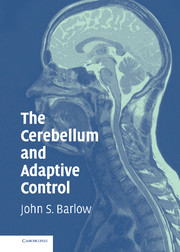Book contents
- Frontmatter
- Contents
- Preface
- Acknowledgments
- PART ONE ANATOMY AND PHYSIOLOGY OF THE CEREBELLAR SYSTEM
- 1 Introduction
- 2 Comparative Anatomy of the Cerebellum
- 3 Anatomy and Physiology of the Cerebellar Cortex
- 4 The Mossy Fiber Afferent System
- 5 The Inferior Olivary System and the Climbing Fibers
- 6 The Cerebellar Nuclei and Their Efferent Pathways: Voluntary Motor Learning
- PART TWO CEREBELLAR FUNCTIONS
- PART THREE MODELS AND THEORIES
- PART FOUR SUMMARY AND CONCLUSIONS
- APPENDIX A A Hybrid Analogue/Digital Multiplexer/Multiplier-Based Adaptive Signal Processor
- Author's Note
- Bibliography
- Index
1 - Introduction
Published online by Cambridge University Press: 28 October 2009
- Frontmatter
- Contents
- Preface
- Acknowledgments
- PART ONE ANATOMY AND PHYSIOLOGY OF THE CEREBELLAR SYSTEM
- 1 Introduction
- 2 Comparative Anatomy of the Cerebellum
- 3 Anatomy and Physiology of the Cerebellar Cortex
- 4 The Mossy Fiber Afferent System
- 5 The Inferior Olivary System and the Climbing Fibers
- 6 The Cerebellar Nuclei and Their Efferent Pathways: Voluntary Motor Learning
- PART TWO CEREBELLAR FUNCTIONS
- PART THREE MODELS AND THEORIES
- PART FOUR SUMMARY AND CONCLUSIONS
- APPENDIX A A Hybrid Analogue/Digital Multiplexer/Multiplier-Based Adaptive Signal Processor
- Author's Note
- Bibliography
- Index
Summary
History
In the introductory chapter of his magnificent three-volume monograph, The Comparative Anatomy and Histology of the Cerebellum, Olof Larsell (1967; Larsell and Jansen, 1972) provides a history of the cerebellum in its gross aspects, which reads in part as follows (additional historical details can be found in Clarke and O'Malley 1968):
Herophilus (335–280 b.c.) is usually credited with recognition of the human cerebellum as a distinct division of the brain. Aristotle (384–322 b.c.), however, calls it parencephalis, indicating that he did not regard it as part of the principal mass of the brain. The great Galen (a.d. 131–200) designated the vermis cerebelli “the worm-like outgrowth” (epiphysis scolexoides). The arbor vitae [the treelike set of outlines of white substance seen on a median section of the cerebellum] was described by Thomas Willis (1664) in his Cerebri Anatome as “ramificatio cerebelli ad foramen arboris.” The latter author also suggested that the cerebellum presides over the involuntary movement of the body, whereas the cerebrum controls those movements brought about by volition. The first good drawing of the vermis was publishes by Heister (1717), but Vesalius (1543) had already included in his Fabrica rather crude illustrations of the entire cerebellum which are in striking contrast to his beautiful figures of muscles, bones, and other structures. Haller (1777) described the cerebellar hemispheres under the name lobi, and Malacarne (1780) gave a detailed description of the entire organ. Many of the terms which Malacarne introduced are still in use. He also described the surface folia or “laminette,” giving their total number as 500 to 780.[…]
- Type
- Chapter
- Information
- The Cerebellum and Adaptive Control , pp. 3 - 6Publisher: Cambridge University PressPrint publication year: 2002



